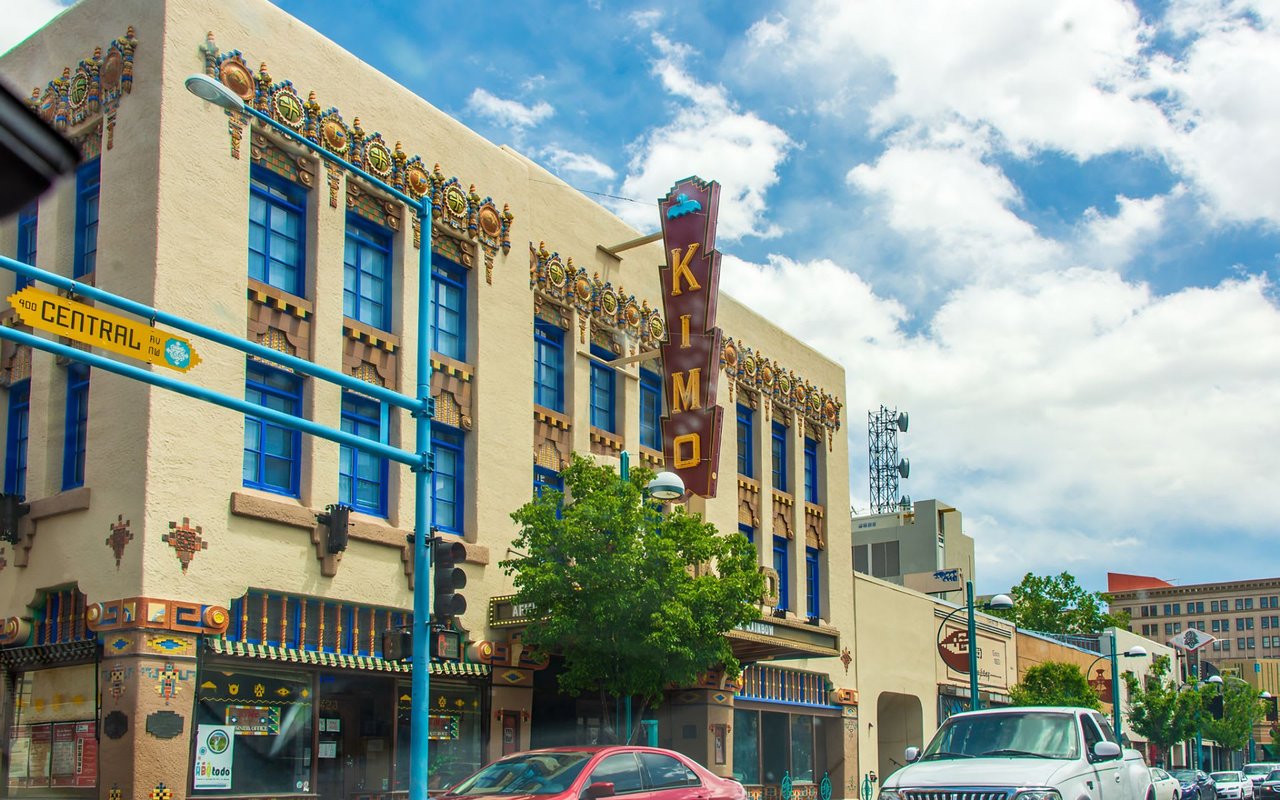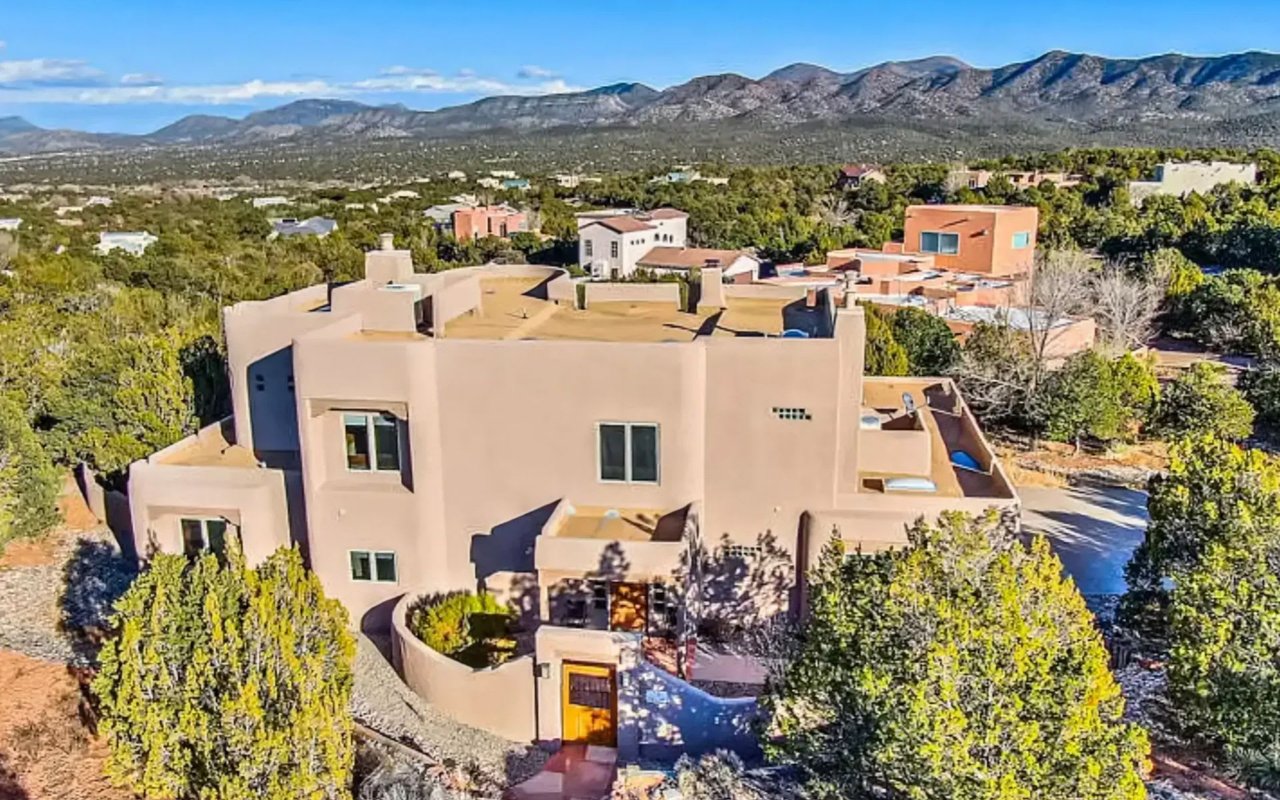Albuquerque, New Mexico, is a city where the past meets the present, blending Native American and Spanish influences with modern American culture. This rich tapestry is vividly expressed through its diverse architectural landmarks, ranging from ancient pueblos to cutting-edge contemporary structures. These landmarks not only tell the story of the city's cultural heritage but also enhance the appeal of homes for sale in Albuquerque. This blog post explores some of the most significant architectural landmarks in Albuquerque, providing a guide for both potential residents and visitors interested in the unique character of this enchanting city.
1. Kimo Theatre
The Kimo Theatre, a Pueblo Deco picture palace, is one of Albuquerque's most beloved landmarks. Opened in 1927, this theatre is a stunning example of the fusion of Art Deco with Southwestern Native American motifs. The building is adorned with symbols from various Native American cultures of the Southwest, making it a visual feast both inside and out. The Kimo Theatre remains a vibrant venue for the performing arts, showcasing its historical significance and architectural beauty.
2. Albuquerque Museum of Art and History
Located in the heart of Old Town, the Albuquerque Museum of Art and History is not only a repository of the region’s cultural artifacts and art but also a notable architectural landmark. Its design reflects the Spanish influence prevalent in the region, featuring adobe walls and terracotta tiles that echo the historic adobe constructions seen throughout New Mexico. The museum’s architecture facilitates a dialogue between the historical and the contemporary, enhancing its role as a cultural hub.
3. National Hispanic Cultural Center
The National Hispanic Cultural Center, situated along the banks of the Rio Grande, celebrates the art and culture of the Hispanic community worldwide. The architecture of this complex is a tribute to Spanish Colonial and Mission-style buildings, evident in its use of exposed adobe, vibrant frescoes, and an open plaza. The center is a cornerstone for cultural expression and a significant stop for anyone exploring the architectural diversity of Albuquerque.
4. San Felipe de Neri Church
San Felipe de Neri Church, located in Old Town, is one of the oldest surviving buildings in the city, dating back to 1793. This historic church is a fine example of traditional Spanish colonial architecture with its thick adobe walls, original vigas (wooden beams), and a picturesque courtyard surrounded by portals. The church not only serves as a place of worship but also as a pillar of historical architecture, attracting numerous visitors each year.
5. Albuquerque Biological Park
The Albuquerque Biological Park is an example of modern sustainable architecture blended with natural landscapes. This complex includes the ABQ BioPark Zoo, Botanic Garden, Aquarium, and Tingley Beach. Each facility is designed with an emphasis on ecological sustainability, using materials and techniques that minimize environmental impact while enhancing the natural aesthetics of the surroundings. This destination offers a refreshing architectural experience, harmoniously integrating built environments with nature.
6. The Alvarado Transportation Center
The Alvarado Transportation Center, a modern re-interpretation of the historic Alvarado Hotel, serves as a major transit hub in downtown Albuquerque. This facility mirrors some architectural elements of the old hotel, known for its Mission Revival style, but with a contemporary twist. The use of modern materials and design practices makes it a standout example of how Albuquerque respects its architectural heritage while moving toward the future.
7. University of New Mexico Campus
The University of New Mexico (UNM) main campus is celebrated for its unique Pueblo Revival architectural style, which is particularly apparent in buildings like Zimmerman Library and Scholes Hall. The campus design incorporates traditional elements such as earth-toned, stucco-covered walls and flat roofs with parapets, reflecting the indigenous Pueblo architectural influences and beautifully integrating with the natural desert landscape of New Mexico.
Hoping to Move to Albuquerque?
Albuquerque’s architectural landmarks offer a window into the city’s soul, showcasing a blend of cultural influences and historical periods. For those considering moving to Albuquerque, the city’s architecture adds an enriching layer to the lifestyle that prospective homeowners can enjoy. Exploring these landmarks provides an appreciation for the city’s design aesthetics and community values.
If you are attracted to the architectural beauty and cultural richness of Albuquerque and are looking at homes for sale in Albuquerque, reaching out to knowledgeable real estate professionals can provide you with the insights needed to find a home that suits your tastes and needs. An experienced team can guide you through the diverse neighborhoods and architectural styles that make Albuquerque a unique place to call home. For personalized assistance and expert advice on Albuquerque real estate, consider connecting with a dedicated team of real estate brokers, such as the team at Jeanette Raver and The Raver Team, who can help you navigate this vibrant real estate market.
*Header photo courtesy of Kent Kanouse via Flickr



